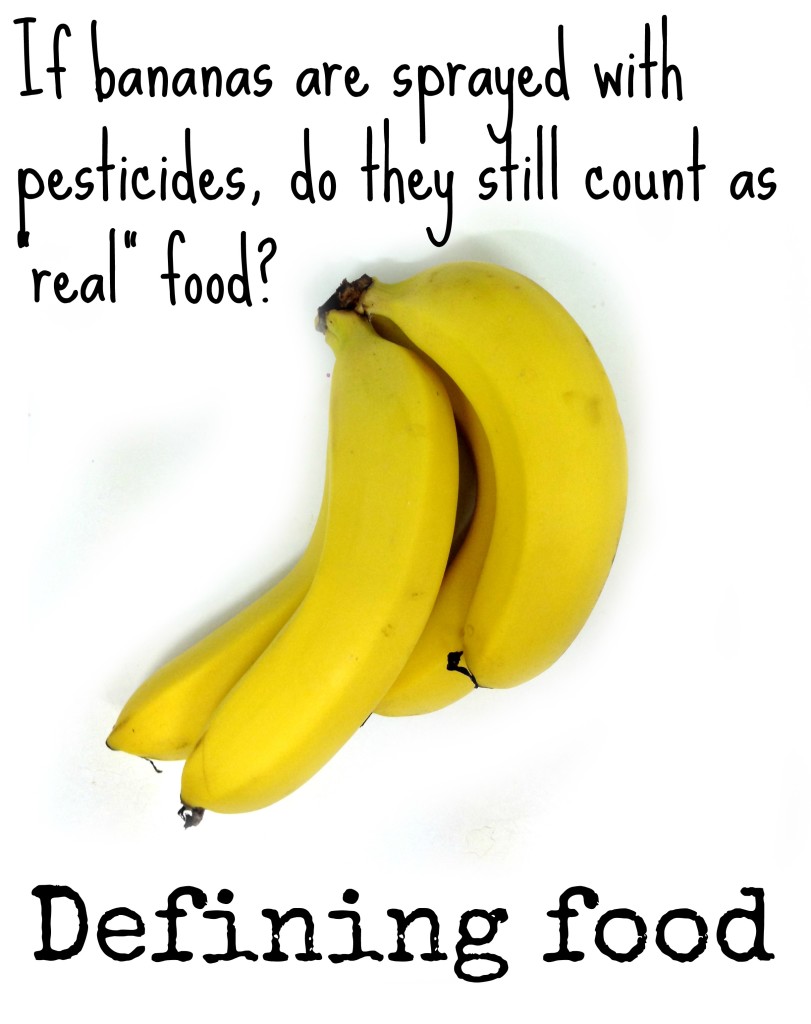I talk a lot about my philosophy of eating real food and avoiding processed “food.” I think that the majority of the time I do a fairly good job of living this philosophy, as well. But every now and then I come up against food which I have a tough time defining. What do we need to take into consideration when it comes to defining food?
Some foods are obvious. A Lean Cuisine frozen meal is processed. A fresh and juicy tomato is real.
Then we have the in-between foods. The Larabar. The tetra pack of 100% fruit juice. Are these real or processed?

Larabars consist of only a few ingredients; for example, the Cherry Pie Larabar has only date, almonds, and unsweetened cherries. A box of 100% fruit juice only contains filtered water and fruit. Still, when we’re looking at defining food, I can’t help but view these items as processed.
In this sense of the word, I am taking the production and manufacturing into account. Larabars are described on the website as “unprocessed,” and in a sense it isn’t really processed. Except that it goes through a manufacturing process, gets packaged up and shipped around the world. If I piled some dried fruit and nuts into a food processor and formed them into bars, it would be “real.” When it goes through a factory and is neatly, uniformly packaged, then it is “processed.”
The difficulty lies in just how much of our food goes through some kind of manufacturing system. Bananas are sprayed with pesticides and shipped to us. Do they then get lumped in the same category as the Larabar? Where is the boundary between the real and the altered?
In The End of Nature, Bill McKibben writes about how the meaning of what is natural has changed. In the past, nature was an all-powerful force, but now that we have discovered that we can control it, is is “a problem we must work out. This in itself changes its meaning completely, and changes our reaction to it” (179). Essentially, very little is “real,” and our definition of “real” is changing to accommodate for the new meanings we have attached to “the natural.” Defining food is challenging indeed.
For now, I’m considering food definitions in terms of degree. A Larabar or a juice box aren’t quite as “real” as a tomato plucked straight from the garden, but they are both a far cry from that frozen Lean Cuisine. The best we can do, then, is to choose foods that are the most “real” as we can get—and try to redefine our understanding of the way we eat.
Have you seen The Future of Food? It was similar to what you are talking about here, but in more depth especially about genetically modified food.
Mary- I have not, but it’s one of the ones that I would definitely like to see.